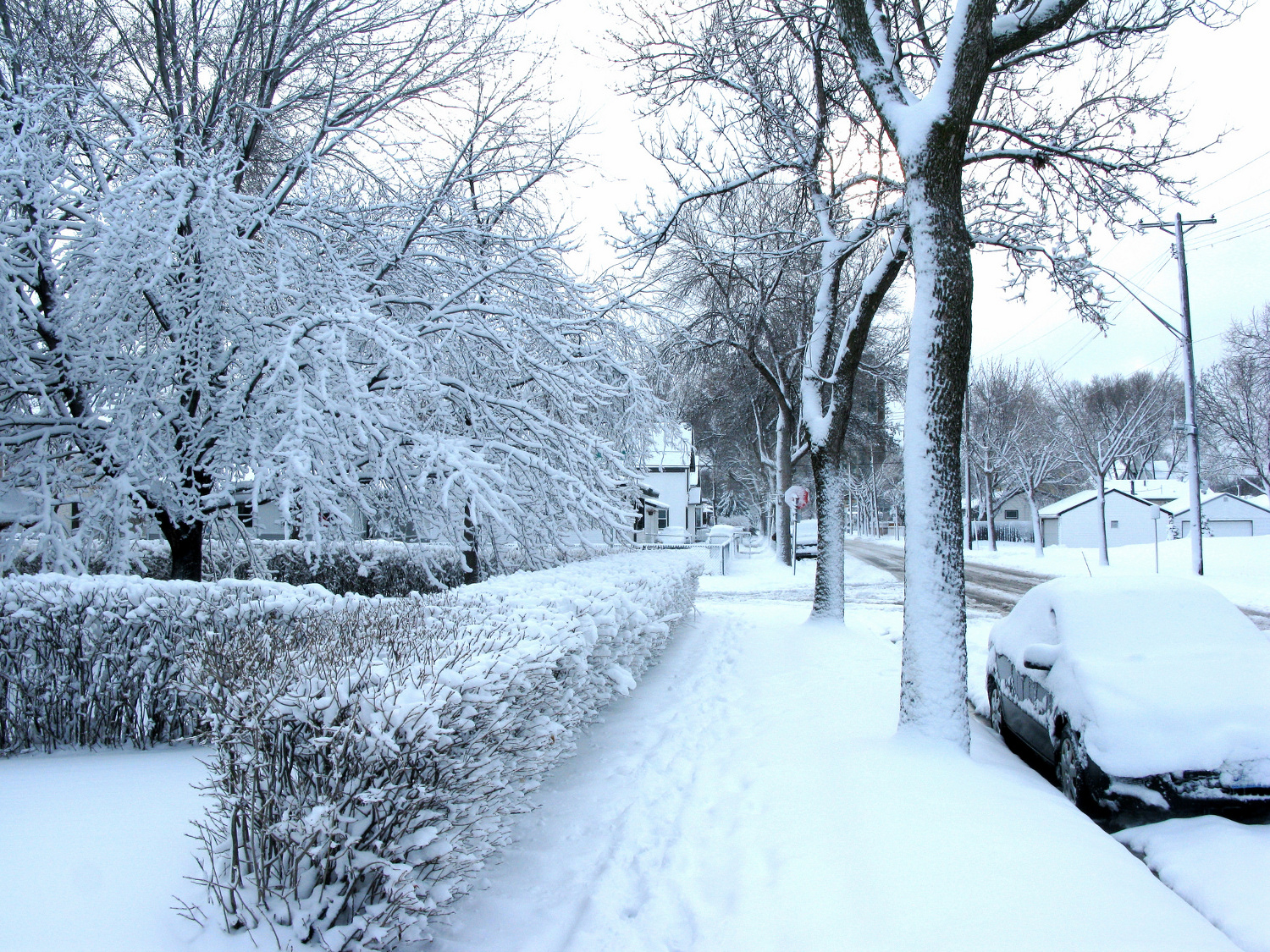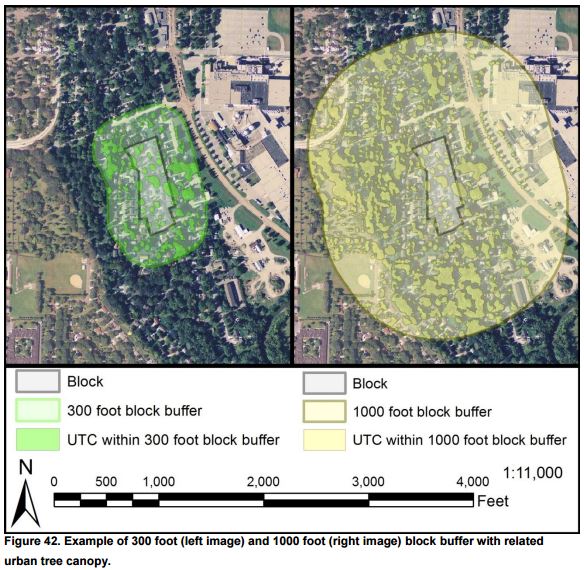Philip Potyondy is a Sustainable Forestry Coordinator with the Minneapolis Park and Recreation Board. He has a B.S. and an M.S. in urban forestry, and is an ISA Certified Arborist and a TCIA certified tree care safety professional. His Masters Thesis research on the benefits of trees in cold climates has interested us for years, and — while it’s hard to think about winter when it’s still hot outside! — Philip has given us good reason to consider the impacts of the urban forest even in the cold months. His research is a reminder that trees are year-round ecosystem services providers. As Philip said, “Trees really are for every season.” –NP
Philip, can you tell us, in a nutshell, what you researched?
There has been a lot of research on the benefits of urban forests in warm climates, but I wanted to explore what the benefits of urban trees were in places where it also gets very cold, like here in Minnesota. I looked at community scale tree canopy and home energy use in the city of Hutchinson, MN and found that urban trees have a big impact on home energy use – especially in the winter.
What people don’t realize is that trees that are 2, 3, even 6 blocks away from their home are impacting their home’s energy consumption. Trees, even though they are defoliated in the winter, disrupt the air as the wind blows toward your house, which slows the wind down before it comes into contact with your walls. 25% of home heat loss is due to wind and the related mechanically induced pressures, so reducing the wind that hits your home improves energy savings.
How do you think this kind of urban tree canopy can be implemented? Could a city like Minneapolis reduce its energy use by planting lots of trees?Northern cities could absolutely reduce their energy costs by planting trees in big numbers. Quite simply, the more trees the better!
To create and maintain a good urban canopy, it’s important for the city to fund the maintenance of existing trees and the planting of new trees. However, that’s only street trees, and the majority of trees in a city are on private property. That’s why programs like City Trees are important. City Trees is a program run by the City of Minneapolis that is a low-cost method of building the city’s tree canopy. Trees are available for Minneapolis residents, businesses, and nonprofits for a greatly reduced fee. This program has gotten over 10,000 new trees in the ground since 2006.
Cities, neighborhood organizations, or non-profits could provide foresters and arborists to residents for free or low-cost, to evaluate existing trees and advise homeowners on which new trees to plant. These professionals could also help identify where there are holes in the canopy and how to improve those areas. Education is also a very important part of encouraging urban forests, because people need to better understand why trees are important and worth planting.
What can an individual homeowner do?
Planting as many trees on your property is amazing, and I encourage people to do it, but it will likely benefit your neighbors more than your own home for winter energy savings.
Be a leader in your neighborhood and form a block group, and encourage your block to plant lots of trees. With enough people, some nurseries may offer a bulk discount and you could have a tree planting day.
It’s also important to lead by example in your own yard and educate your neighbors about the benefits of urban trees. The city can tell your resident group the best species and combinations of species to be planting based on what is already in your area. Diversity is paramount. Also, conifers can be put on private property but are not used as street trees, so take advantage of that.
How can landscape architects better incorporate urban trees? What do you see them doing incorrectly?
Plant trees anywhere.
Incorporate trees into every design and the bigger they are at maturity, the better.
Don’t get hung up on the location so much – south to you is north to your neighbor.
I believe as long as there are trees in your design, you have done something great. It’s also very important to leave as many existing trees on sites as you can. Don’t create a clean slate – instead, work with what is already present and in good condition, and incorporate mature trees into your projects.
We’ve been talking about cold climate benefits from trees, but what about in warmer climates? It gets hot in places that also have cold winters.
Shade will always mean cooler temperatures, so that is a benefit regardless of where you live. The payoff in warm climates is more direct to individual homeowners.
You can shade your home with a few trees and by keeping the surfaces of your home cool, your energy bills will go down. It’s also important to remember that the urban canopy has an effect in forming a microclimate. If asphalt and other paved surfaces are shaded, not as much heat builds up (which would otherwise contribute to the heat island effect).
Lots of research has been done on the benefits of planting trees to combat heat islands – but I wanted to show people that trees are important for energy savings in all climates! Trees really are for every season.
Nicole Peterson is a landscape designer with The Kestrel Design Group.







Leave Your Comment